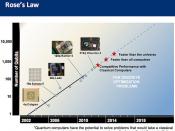Running Head: Week 2
Pain Assessment Tool for Postoperative Pain
[Writer Name]
[Institute Name]âÂÂ
�
Pain Assessment Tool for Postoperative Pain
Introduction
Indeed, the experience of pain can go beyond the physiological sense of the situation, which is central to the psychogenic perspective, in which diagnostic tests can not reveal any pathology. Turk and Okifuji (1999) argue that the experience of pain affects the emotional, social, family, professional and physical activity. In addition to pain is a physiological phenomenon, but also influenced by psychological and cultural factors.
Discussion
In general, the study of changes in response to changing perceptions of pain. They have shifted from the notion of a purely sensory phenomenon, and experience that includes both sensory and reactive (emotional) components (Hardy et al. 1952, Beecher 1959) and, finally, one of which is sensory / discriminative, motivational / emotional and cognitive / behavioral components play part (Melzack and Casey 1968).
During this process, the researchers emphasize the various interpretations and, therefore, assessment tools have been developed to investigate the various components, as discussed below.
Sensory / discriminative
Sensory / discriminative component of pain was primarily on the basis of quantitative psychophysical methods that attempt to determine the threshold of pain and rating scale methods. The measured variable, as the gravity and intensity of pain.
Psychophysical method is widely used in the period after the Second World War (Atkins et al. 1996). Pain threshold was determined by asking respondents to identify the point of increasing the incentives for continuous pain, which is separated from the Non-painful painful experience. However, these methods have been criticized for the inconsistent results of the production (Kutscher and Kutscher 1957). Nonlinearity, which exists in relation to different levels of pain may be the cause of failure of these instruments to assess more reliably. Recently, Atkins...


